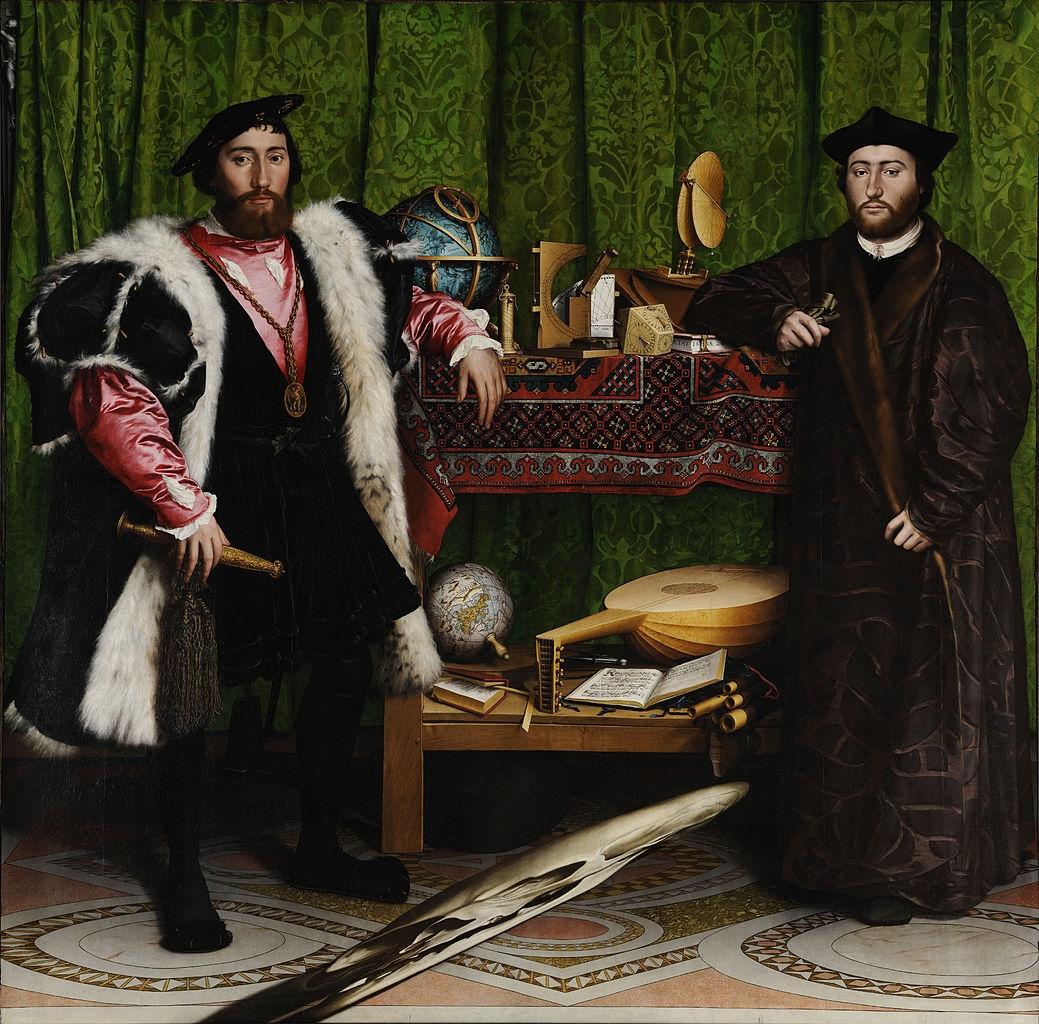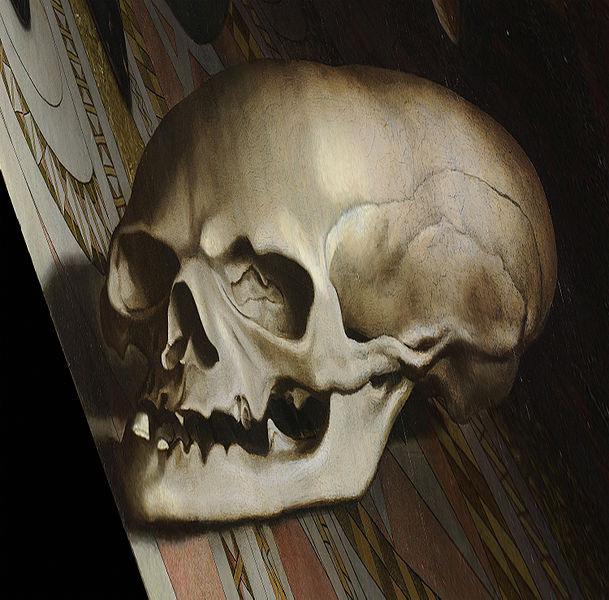
2 minute read
THE PAINTING
The Am bass ador s (153 3) is a pain ting by Han s Holb ein the You nger in the Nati onal Gall ery, Lon don. As well as bein g a dou ble portr ait, the pain ting cont ains a still life of seve ral meti culo usly rend ered objec ts, the mea ning of whic h is the caus e of muc h deba te. It is also a muc hcited exa mple of ana mor phos is in pain ting. Alth oug h a Ger manborn artist who spen t most of his time in Engl and, Holb ein displ ayed the influ ence of Earl y Neth erlan dish pain ters in this wor k. This influ ence can be note d most out war dly in the use of oil pain t, the use of whic h for pane l
Source: http://commons.wiki media.org
Advertisement
Hans Holbein the Younger [Public domain], via Wikimedia Commons
Source: http://commons. wikimedia.org pain tings had been deve lope d a cent ury befo re in Earl y Neth erlan dish pain ting. Wha t is most "Fle mish " of Holb ein's use of oils is his use of the medi um to rend er meti culo us detai ls that are main ly sym bolic : as Jan van Eyck and the Mast er of Flem alle used exte nsiv e imag ery to link their subj ects to divi nity, Holb ein used sym bols to link his figur es to sho w the
A perspective manipulated image of the anamorphic skull which can only be seen when approaching the picture very closely from the right.

The Artist
artist and print mak er who wor ked in a Nort hern Rena issan ce style . He is best kno wn as one of the great est sam e thin gs on the table . Han s Hol bein the You nger (c. 1497 –betw een 7 Octo ber and 29 Nov emb er 1543 ) was a Ger man portr aitist s of the 16th cent ury. He is calle d "the You nger " to disti ngui sh him from his fathe r, Han s Holb ein the Elde r, an acco mpli shed pain ter of the Late Goth ic scho ol. Holb ein's art was prize d from early in his care er. Holb ein has also been desc ribe d as a great "one -off" of art histo ry, since he foun ded no scho ol.
Holb ein's art has som etim es been calle d reali st, since he dre w and pain ted with a rare preci sion.
Holb ein was neve r cont ent, how ever, with out war d appe aran ce. He emb edde d layer s of sym bolis m, allus ion, and para dox in his art, to the lasti ng fasci natio n of scho lars. In the view of art histo rian Ellis Wat erho use, his portr aitur e "rem ains unsu rpas sed for sure ness and econ omy of state men t, pene trati on into char acter , and a com bine d rich ness and purit y of style ".


